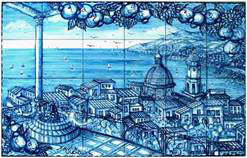Speaker
Dr
Igor Pshenichnov
(Institute for Nuclear Research, Russian Academy of Sciences and Frankfurt Institute for Advanced Studies, Goethe University)
Description
Microdosimetry measurements with Tissue Equivalent Proportional Counters (TEPC) are routinely used to characterize the quality of radiation by obtaining distributions of lineal energy y. Radiation fields of therapeutic pencil-like nuclear beams in tissue-like phantoms are complex due to the admixture of secondary protons, neutrons and nuclei produced in fragmentation reactions [1]. We demonstrate the ability of our Monte Carlo model for Heavy-Ion Therapy (MCHIT) based on the Geant4 toolkit [2] to describe microdosimetry spectra measured in a water phantom irradiated by carbon nuclei [3]. Events of energy deposition to a TEPC sensitive volume are characterized by certain topology depending on the position of a TEPC in the phantom with respect to the primary beam. As demonstrated by calculations, microdosimetric spectra are defined by beam nuclei and nuclear fragments inside and close to the beam and by neutrons and protons far from it. Following the validation of MCHIT with microdosimetry spectra measured with quasimonoenergetic neutrons [4], we evaluate the contribution of secondary neutrons to the microdosimetry spectra in the water phantom irradiated by carbon nuclei. The equivalence of the microdosimetry spectrum measured with a macroscopic TEPC gas volume to one corresponding to a micrometer-size tissue volume is demonstrated by calculations.
References:
[1] I.A. Pshenichnov et al., Nucl. Inst. Meth. Phys. Research B 268 (2010) 604
[2] J. Allison et al., IEEE Transact. Nucl. Sci. 53 (2006) 270
[3] G. Martino et al., Phys. Med. Biol. 55 (2010) 3441
[4] Y. Nakane and Y. Sakamoto, Nucl. Instr. Meth. A 459 (2001) 552
Author
Dr
Igor Pshenichnov
(Institute for Nuclear Research, Russian Academy of Sciences and Frankfurt Institute for Advanced Studies, Goethe University)
Co-authors
Prof.
Igor Mishustin
(Frankfurt Institute for Advanced Studies, Goethe University and Kurchatov Institute, Russian Research Center)
Mr
Lucas Burigo
(Frankfurt Institute for Advanced Studies, Goethe University)

